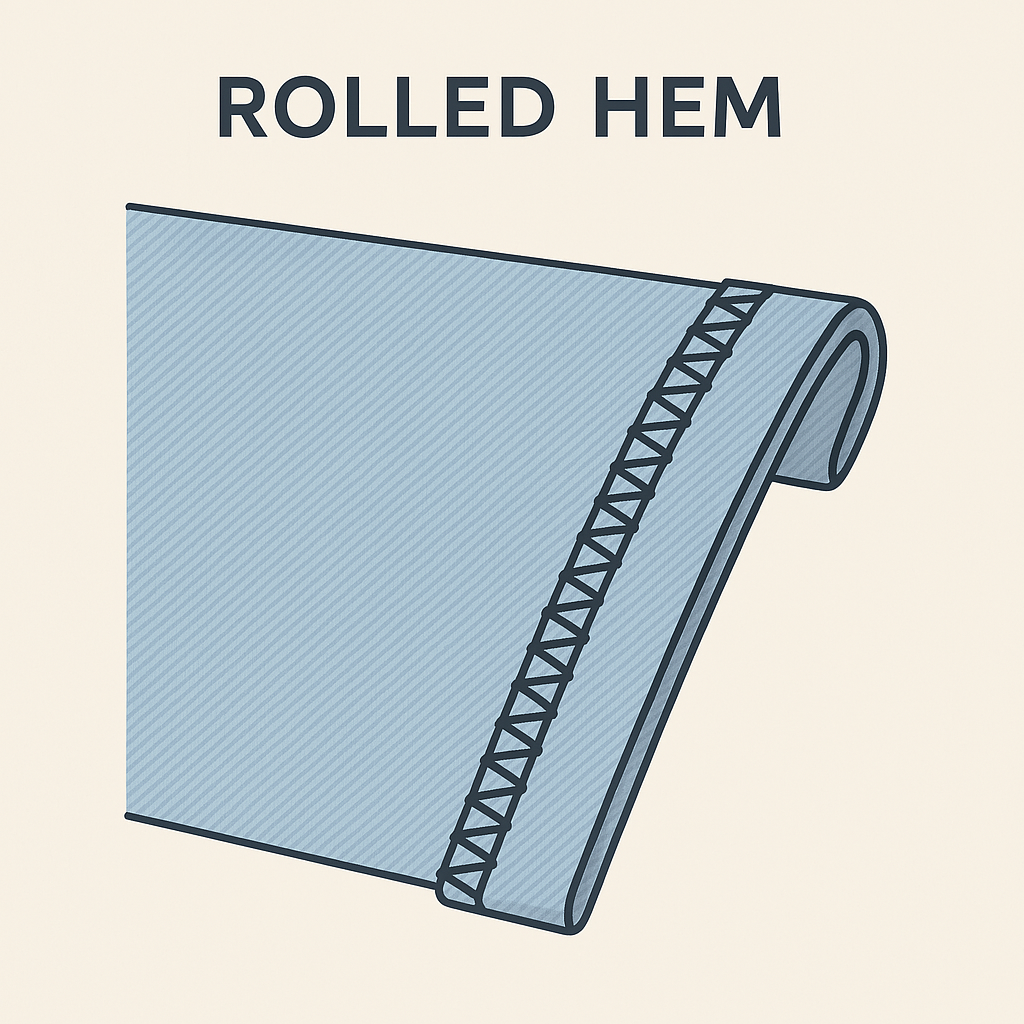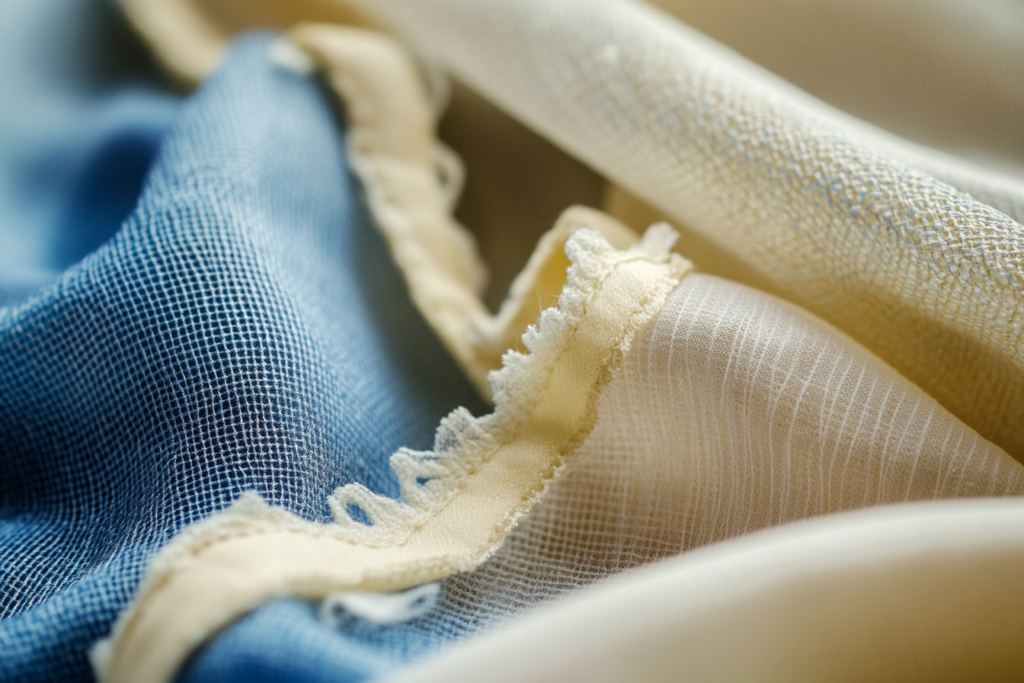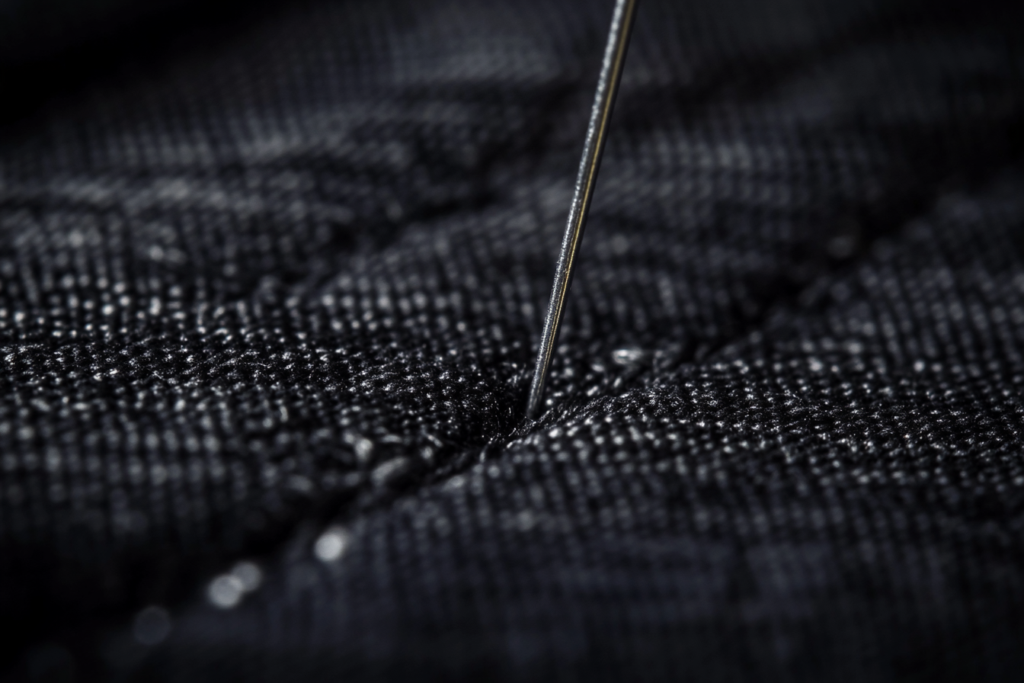Rolled Hem: Techniques, Structure & Use in Modern Garment Construction
🧵 What is a Rolled Hem?
A rolled hem is a refined finishing technique that creates a tightly folded edge on lightweight or woven fabrics. It adds structure to the garment while providing a neat and professional finish. The rolled hem style maintains its shape through repeated folding due to its EFb configuration, which ensures fixed placement regardless of the number of folds.
This hemming method is especially effective on non-stretch woven fabrics, making it ideal for classic denim cuffs and delicate silk scarves, but it is rarely used on knit fabrics due to the thickness and reduced flexibility it causes.
🔍 Rolled Hem Variations
🔹 EFb Hem Style
- Description: A small, structured fold with secure stitching.
- Feature: Does not shift even with multiple folds.
- Use: Common for tailored woven garments.
🔹 Deep Fold Rolled Hem
- Description: Features deeper folds with consistent stitch type.
- Function: Adds strength and durability.
- Use Case: Frequently used for jeans hems, due to its strong structure.
- Caution: Not suitable for stretch or knit garments, as it increases bulk and reduces elasticity.
🔹 Narrow Rolled Hem
- Description: A fine, narrow hem (~1/16 inch) for soft and decorative edging.
- Application: Ideal for silk scarves or lightweight ruffle hems.
- Effect: Provides a smooth, ruffle-free look while allowing natural drape.
🚫 When Not to Use a Rolled Hem
- On sports knit fabrics or highly elastic materials.
- For garments that require stretch at the hem (e.g., activewear).
- On light knits, where hemming may cause unwanted wrinkling or seam stress.
⚠️ In such cases, consider alternative finishes like a coverstitch or serged hem.
👗 Garment Use Table for Rolled Hem
| Garment Type | Recommended Hem Style | Fabric Type | Notes |
|---|---|---|---|
| Denim Jeans | Deep Fold Rolled Hem | Non-stretch Woven | Standard method used in virtually all denim cuffs |
| Silk Scarves | Narrow Rolled Hem | Lightweight Woven | Soft finish, maintains fabric drape |
| Blouses with Ruffles | Narrow Rolled Hem | Chiffon/Organza | Prevents fraying while keeping edges neat and delicate |
| Knitwear (T-shirts) | Not Recommended | Stretch Knit | Causes wrinkling and limits stretch |
| Dress Pants | EFb Rolled Hem | Twill / Broadcloth | Clean and strong edge finishing |
🌟 Benefits of a Rolled Hem
✅ Clean and professional look
✅ Prevents fabric fraying
✅ Long-lasting finish on woven garments
✅ Elegant and decorative for lightweight textiles
💡 Pro Tips for Sewing Rolled Hems
- Use a rolled hem foot attachment for consistency.
- Press folds before stitching for better alignment.
- Test on fabric scraps to adjust tension and stitch length.
- For silks, use a fine needle (size 60/8 or 70/10) to avoid pulls.
📌 Conclusion
Rolled hems offer a classic and durable edge finish for garments made of woven fabrics. While it’s perfect for jeans, scarves, and formal blouses, it is not recommended for stretch knit fabrics due to bulkiness and lack of flexibility. Choosing the right hemming technique based on fabric type is essential for comfort, functionality, and appearance.




